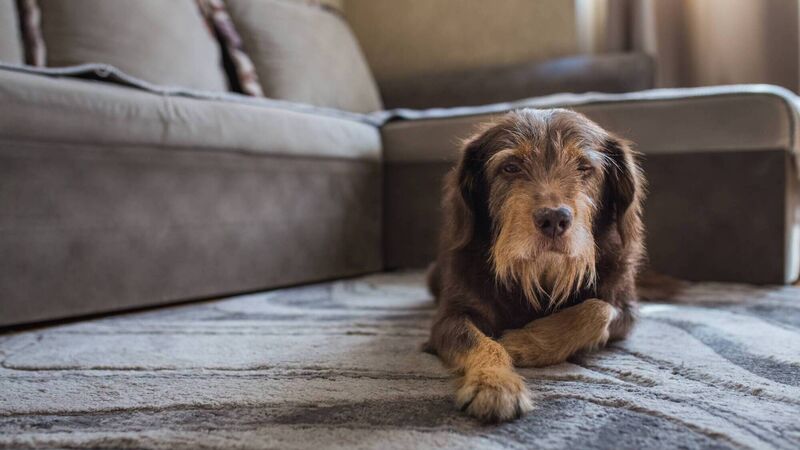Pete the Vet: Sore knees are no joke for dogs

The most common knee problem seen in dogs is ruptured cruciate ligaments. Picture: iStock
Just as many humans suffer from painful knees, so do pets. Dogs are particularly prone to knee problems.
How do you know if your dog has a sore knee? In the veterinary world, our patients can’t tell us. We need to find out for ourselves by examining them.
The first clue is that a dog is limping. Sometimes this is ridiculously obvious: the dog may be carrying the leg in the air, refusing to put any weight on it at all. Other times it can be subtle. A pet’s movements may not look quite right, but it can be difficult to know which back leg is causing the problem. Right or left?
For vets, the first part of a lameness examination is to watch a dog trotting up and down. We look for subtleties, such as a shortened stride length, muscle wasting, or altered up-and-down movement of one side of the rump. It’s hard for a beginner to spot these changes. Some vets now take videos of dogs walking and running: they can then watch these in slow motion, allowing detailed analysis.
If a lameness is very mild, it can be difficult to see an altered gait: for example, in some cases of arthritis, a dog may be lame when getting up in the morning, but once they’ve been moving for a while, the discomfort passes, and they walk and trot normally. So it’s important for vets to chat with an owner in detail about their observations at home.
It’s even more difficult if a dog has pain in both knees at the same time. This can mean that they walk and run in an evenly balanced way with two sore knees, without visible lameness other than that they are moving in a different, less graceful way to normal.
Observation of a dog from a distance is only the first step: once an overview has been gathered, it’s critically important to physically examine the dog’s limb. For hind limb lameness, both legs are examined, even if only one is sore. The animal’s reaction to having their good leg felt and manipulated gives useful clues about their general pain tolerance, making it easier to properly assess their sore leg. Some dogs squeal when the good leg is just lightly touched, even if there is no pain. Other dogs are so stoical that they barely flinch even when an obvious injured area is examined.
The aim of the vet's physical examination of a sore leg is to identify the precise location of the pain. Starting with the toes, and moving upwards, every joint is flexed, extended and tweaked. Most dogs with healthy joints tolerate this with remarkable grace. They only pull away or show signs of discomfort if a joint is painful for some reason.
It’s fairly simple to pinpoint the knee when it’s the focus of a lameness: sometimes it’s swollen, and nearly always, when the knee is straightened with gentle pressure, the dog will let you know that it’s uncomfortable. They may yelp, or pull away, or there may be milder signs of discomfort, such as lip-licking or ear flattening. Vets need to watch a dog’s body language and facial expressions very carefully while they carry out this examination, so that they spot subtle changes.
There’s a long list of possible reasons for a sore knee. Minor causes include sprains and bruises caused by twisting or knocking the knee while exercising. These will often resolve after resting for a few days with a short course of pain-relieving medication.
More serious causes can be tricky to diagnose: often x-rays are needed, along with careful physical manipulation of the joint under sedation or anaesthesia, and sometimes extra tests like CT scans or sampling joint fluid with a needle and syringe. While such advanced diagnostics may be needed to diagnose conditions such as arthritis or bone cancer, the simple act of physically moving, flexing and extending the joint while the animal is anaesthetised is often the most effective way of assessing the ligaments and tendons around the knee.
This brings us on to the most common knee problem seen in dogs: ruptured cruciate ligaments. These are the small bands of fibrous tissue that cross the knee joint, linking the upper leg bone to the lower leg bone. These ligaments rupture in human footballers (and cats) when the knee is twisted suddenly in a fall. In contrast, in dogs, rupture occurs without an accident, following degeneration of the ligaments as a natural process.
The ligaments stretch and then break, causing the knee to be so unstable that it can no longer bear any weight at all. Typically, a middle-aged, large breed of dog is affected: they may have a mild lameness that responds to initial treatment, and then suddenly gets worse.
Or they may, out of the blue, suddenly start to carry one of their back legs. If a dog develops this in one leg, there’s a 30-50% chance that the other leg will soon be affected as well. The reasons for the condition are still poorly understood.
Small dogs (less than 15kg) and cats may recover stability in an affected knee with simple rest and pain relief. Larger dogs always need expensive, complex surgery, involving the insertion of artificial ligaments, or the installation of metal plates to realign the support structures around the knee so that it’s stable again.
If you have a large dog, the high risk of cruciate ligament rupture with the attendant need for expensive surgery should be enough to persuade you to take one simple step to plan for this eventuality: get your dog insured before they ever show any sign of a painful knee.






